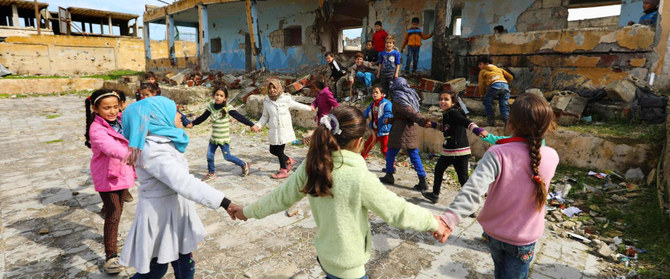
For our future and the well-being of children around the world, one of the key fundamentals for the international community is to ensure that every child has access to education and proper healthcare regardless of their race, ethnicity and background.
The Convention on the Rights of the Child, which is a legally binding international agreement, was adopted by the UN in 1989. This landmark global agreement is considered to be one of the most widely ratified human rights treaties in the world, as 196 countries are now party to it. The only country that has not yet ratified the UNCRC is the US. A two-thirds majority in the Senate would be needed in order to pass it, but no president has even sent it for a vote.
Since the agreement is legally binding, it means that governments are bound by international law to adhere to the terms of the convention in order to protect children. One of the terms is that signatories must ensure that “all segments of society, in particular parents and children, are informed (and) have access to education.” It adds: “States parties recognize the right of the child to the enjoyment of the highest attainable standard of health and to facilities for the treatment of illness and rehabilitation of health. States parties shall strive to ensure that no child is deprived of his or her right of access to such healthcare services.”
While it is encouraging that many countries have taken positive steps to ensure that their children have access to education and healthcare, nearly a quarter of a billion children and youths between the ages of six and 18 remain out of school around the world. And children who do not have access to primary school (meaning they do not get the chance to even learn how to read and write) number nearly 60 million globally. This equates to more than double the population of all the Scandinavian countries combined.
Education is the cornerstone of any community and society. But unfortunately, in spite of the significance of education and schools for the future of children, it is one of the sectors that is the least funded by humanitarian and charitable organizations, with only about 3 percent of global humanitarian funding allocated to education. The regions with the most children and youths out of school are sub-Saharan Africa and Central and Southern Asia.
More importantly, when it comes to healthcare, the survival of many children depends on having access to quality medical services. Hundreds of millions of children still lack access to healthcare. This robs them of their childhoods and their futures, as it makes it very difficult for many children to grow healthy and get educated, even if there is access to education in their community. In 2021, about 5 million children (some 14,000 a day) died before they reached their fifth birthday, while 2.1 million children and youths aged between five and 24 lost their lives, according to figures released this year by the UN Inter-agency Group for Child Mortality Estimation.
Poor communities become trapped in a cycle of hardship that can last for generations.
Dr. Majid Rafizadeh
To tackle this vital issue, the underlying causes need to be addressed. The first reason for children’s lack of access to education and healthcare is conflict. Children are the most vulnerable group during times of armed conflict or instability. Some recent examples include the devastating effects that the Syrian civil war had on children, as well as the ongoing conflict in Sudan. UNICEF’s former chief of education Jo Bourne pointed out: “For countries affected by conflict, school equips children with the knowledge and skills they need to rebuild their communities once the crisis is over. Schools can also protect children from the trauma and physical dangers around them.”
The second factor that plays an important role in children’s lack of access to education and healthcare is poverty. Poverty forces many children to work at an early age instead of going to school. Poor communities become trapped in a cycle of hardship that can last for generations, as they are unable to provide the resources, education, opportunities and basic necessities to allow their children to pull themselves out of poverty. Children are disproportionately affected since almost half of the people living in extreme poverty are children. An estimated one in six children, or 360 million children worldwide, were living in extreme poverty before the COVID-19 pandemic struck.
As a result, the international community must focus on reducing and eliminating conflicts and poverty. It is critical for wealthy and developed nations to provide financial assistance to poor communities and countries and make sure that education is accessible and offered for free. Providing free meals at schools will also help with children’s nutrition in poorer nations.
Funding for education should also increase and be on top of the agenda for the international community and humanitarian organizations. This also requires cooperation between the private sector, private philanthropy, wealthy individuals and governmental programs in order to effectively channel resources.
In a nutshell, in spite of the fact that children have the right to education and healthcare services, hundreds of millions of children still lack access to these basic needs. It is incumbent on the international community to ensure that education and healthcare services are accessible to every child by reducing and even eliminating conflicts and poverty.
• Dr. Majid Rafizadeh is a Harvard-educated Iranian-American political scientist.
X: @Dr_Rafizadeh












